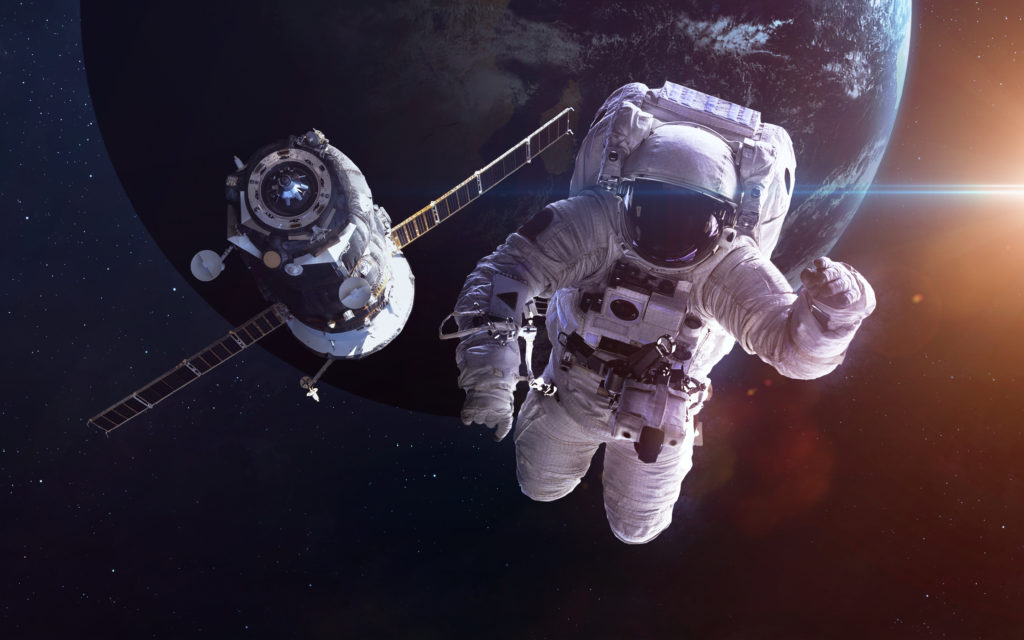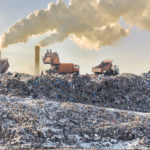Among the many creatures that have lived on this planet, humans are unique in that they not only tamed the wild and created large urban societies, but increasingly we are having an impact on the very fabric of the earth itself – and it’s not always for the better.
When it comes to the ‘human planet’ we hear all sorts of things, many of them foreboding and some even seemingly contradictory – like there is too little space, too much development, that the population is exploding and the natural environment slowly dying, but also that the population is greying, that we’re not having enough children to replace ourselves. We consume and pollute too much, we are/are not contributing to global warming, that there is no global warming, that we will all have to work to 70 and beyond yet artificial intelligence will take our jobs away. We’re depleting the earth’s resources, that there will be land and water wars to replace today’s oil wars, that there is unemployment yet the labour force is shrinking. More immigration means economic growth but also more unemployment, and occasionally even that decades of overpopulation and over-exploitation have taken us to the cusp of a demographic collapse brought on by environmental decay and epidemics.
That’s heavy stuff. What’s more, we have been hearing much of it for decades, from the early conservation messages of Jacques Cousteau and the World Wildlife Fund to disturbing images of starvation and the mass displacement of people following war, dictatorships, famines and civil strife. The sights and sounds of doom and gloom have been among us for most of our lives, yet except for the occasional hard-hitting recession we have mostly been living in what seems like a parallel universe – one increasingly focused on prosperity, hedonism, materialism, navel-gazing and pop culture. We live our lives through the television, internet, make offices and shopping malls our glass-and-marble habitat, and travel across the world in search of business success and that elusive perfect holiday. The world we live in seems pretty remote from the shadows cast by dire warnings, and yet they persist. Nay, they grow stronger.

The human ape conquers space ship earth
Through the process of natural selection and accelerated evolution the ‘human ape’ came down from the trees, so to speak, and gradually conquered planet earth. At first humanity had little impact on its surface, water systems, climate and air quality, having a hard enough time surviving the vicissitudes of nature and its own violent temperament, but over time various civilisations around the world succeeded in gaining seemingly complete mastery over the natural world. During the process we learned a lot, and with every step of advancement we took, mankind improved its quality of life – as well as the ability to destroy one another and the very planet that sustains us.
The view from the ground makes us feel like mighty ants fighting for domination of a large and everlasting world, but seen from the perspective of the men who landed on the moon, the astronauts and cosmonauts orbiting the earth and the many scientists who spend their days peering into deep space, our planet is a singular island of life in a vast and so far lifeless universe. The question for us isn’t so much about if there is life – in whatever form – out there in the dark, but whether there is anywhere else that could sustain us, in case we destroy our one and only habitat. Put differently: every one of us is precariously clinging to life on this green and blue rock that is drifting through a deadly hostile environment. Seen in this farfetched way, we are like astronauts entirely dependent for our existence on the space ship earth.
And pillages it
But this is not the perspective that governs life on the human planet. From governments and international agencies to individuals like you and me, we trash rather than revere the very source upon which our continued existence depends. Early on, mankind preferred to make sacrifices to unseen gods rather than worship the ground that we walk on, and even today we pray to greed, violent ideologies, bacchanalian fantasies and ancient religions rather than nature. Indeed, those who do, are often ridiculed, also because they often belong to the fringes of society.
From the Renaissance through the Industrial Revolution and the world wars to mass-consumption and the digital era, we have increasingly made our present felt. Every improvement in living standards has come at a high cost to the quality of our natural environment; every quantum leap in technology has had its dark side, and every advancement in medicine has relieved suffering as well as made it possible for us to overpopulate the world and in the process reduce the quality of human life in large parts of the world. The prosperous sofa philosophers in the West feel very righteous about vaccinating the new-born masses of the Third World but they are blissfully ignorant of the demographic consequences and thankfully unaware of the realities on the ground, in countries where violence, rape, corruption, mismanagement, crime and famine have torn apart entire societies.
Right now everything boils down to demographics, though this is not acknowledged by politicians and therefore never discussed. In the post-colonial era efforts were made by people like Indira Ghandi to promote family planning, but they were seen as politically incorrect so dropped in favour of teeming masses in dire misery. To put it in perspective, it took humans hundreds of thousands of years to reach one billion inhabitants, a figure attained at the beginning of the 19th century. It would take another 123 years to get to two billion, then 33 years to make it three billion in 1927, and ever since then we have been adding one billion new people to the world every dozen years or so! In just six years’ time we are expected to reach eight billion, and so on.

The future of the human planet
The number of poor and starving grows along with the population, as do those who consume and travel, and the rising masses displaced by wars, famines, epidemics and natural disasters that can be directly and indirectly linked back to overpopulation, over-exploitation of resources and yes, over-consumption by certain parts of the world. Those in the prosperous fifth of the world absorb far more than their share of fuel, heating, food and consumer goods, while the overpopulation in the other four-fifths leads them to deplete the soil, water and wood resources and pollute in a more direct, unsanitary way. Plastic litters the world, sea and land, the air and water quality has dropped in many places, valuable soil is being eroded, over-construction is eating into agricultural and natural zones, and deforestation and over-fishing are known consequences, not to mention the growing list of endangered species about to be lost forever.
With climate changing, it isn’t entirely abstract and academic to think about our impact on the world; the huge storms and shifts in weather patterns we are witnessing could be the early beginnings of a process that we can’t control or contain, much less roll back. If significant low-lying land is lost to the sea, the constant flow of immigrants witnessed over the past half century could seem like a slow trickle compared to the 500 million or so who would have to leave large parts of Bangla Desh and Nigeria – two countries that have seen their populations explode in recent decades. Nigeria being a particular example as it grew from 30 million to 200 million in 65 years. Within a modern human lifetime its population will have expanded eight times!
So if the world’s population continues to grow rapidly and place dangerous pressure on all kinds of resources, not to mention the natural environment and the quality of human life, then how does this fit in with all this talk about a greying population? It’s because the world is at different levels of development, not just in terms of wealth, economic development and political maturity, but also in relation to social evolution and the accompanying birth rate. Birth rates have traditionally been high but matched by high death rates from famine and disease. In developed countries the birth rate has plummeted to below replacement level (2.2 children per couple), and while life expectation is high the sheer number of old people is ‘greying’ the total population. Compared to the 1950s the population pyramid has inverted, and now the number of people working to support pensioners and the other economically inactive parts of the economy is getting smaller – especially as the labour force seems to be contracting in developed countries with more and more people ‘opting out’ and ‘bumming around’.

It means those who do work will have to do so well beyond the age of 65, though it is anyone’s guess how artificial intelligence will impact on the global labour market in the coming decades. Maybe little human labour will be needed by the mega corporations, which would spell bad news for the more than 100 million people that are added to the world’s population each year. Birth rates are dropping outside of Africa and the Middle East, but the sheer numbers of people now are so vast that even a small percentage increase is still huge in real terms. If we are not to descend into a dystopian world of chaos, violence and anarchy we will have to manage our natural resources better, nurse our world back to health. Fighting extremism and growing disparity of wealth, and reviving the social contract that maintains a balance between individual and collective rights, corporate profit and the greater good of society, and harnessing technological development is a key example of this
If we ever realise just how unique and precious life in this green garden is, we might even begin to focus on what is really important and valuable, and leave our social and psyche-induced rat races behind us for good.









